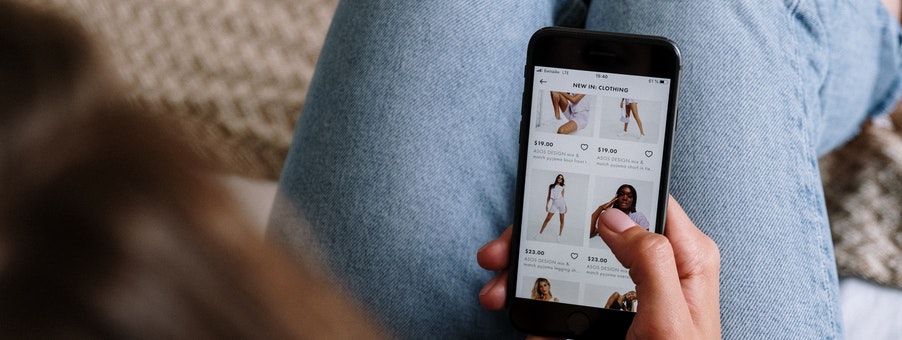Omnichannel retail is a term used to describe brands selling across multiple channels, including branded websites, marketplaces, brick-and-mortar stores, and social commerce such as Facebook and Instagram. This modern approach emphasises that each element of an omnichannel strategy is important; a physical store is crucial for customer interaction and building trust, a user-friendly website is key for customer research and convenience, and the viable option of selling across social channels taps into the increasing prevalence of recommendation shopping.
Omnichannel is the future of retail. Retailers know this – a 2017 study by Brightpearl found that 87% of retailers agreed that omnichannel is critical to their success, but only 8% felt they had mastered it. Retailers may be hesitant to implement it due to fears of getting it wrong, and then there’s also the associated costs to consider; especially during this difficult economic period, retailers are wary of making significant investments.
However, in the case of omnichannel, this investment is vital and will deliver a return. This article explores several solutions that will deliver tangible results for retail brands.
Click and Collect
Click and collect is often the first thing that comes to mind when considering omnichannel. Ordering online and picking up the products at a collection point in-store is the ideal blend of digital and physical channels. It is useful, especially during this Covid era when people are trying to stay safe. Customers have the freedom to browse a company’s website from the comfort and safety of their home, and then benefit from being able to collect their items almost immediately, instead of waiting for delivery.
Click and Collect is the poster child for omnichannel success. It can deliver profit for retailers by driving higher sales and reducing operating costs. For the cost of one delivery order, a retailer can fulfil multiple Click and Collect orders. In 2017, the Click and Collect Retail Consumer Preference Study found that almost one-third of shoppers made an online purchase and picked their order up at a store during the 2016 Festive Period. In 2020, in-store pick-up increased by over 554% year-on-year in May as a result of the COVID-19 pandemic.
For those retailers who have a physical presence and have yet to implement a Click and Collect service, it should be the priority. Even if you don’t have a store network, partnering up with a retailer who does will allow you to reap the benefits. In the UK, eBay uses Argos click and collect points, and John Lewis makes use of Co-op stores for its online customers, which is a clever strategy considering that there are over 4,000 Co-op stores located in many convenient locations across the country.
Aside from Click and Collect, here are some other omnichannel solutions that can deliver success:
Fulfilment from Stores
Although Click and Collect does fall under the umbrella of fulfilment from stores, it is only part of the story.
Store fulfilment can also include shipping items to customers’ homes from a retail store instead of a fulfilment centre. An immediate advantage is better stock management which translates to increased visibility, less waste, and less storage requirements. By separating stock across warehouses and individual stores and implementing a robust inventory management system, retailers can make the most of the stock they hold across their entire business. Making all of the inventory visible online means retailers can offer a wider product range and meet more customer requirements.
Using store stock avoids the problem of any one store building up excess products which would otherwise take up valuable space and have to be sold at a discount later on. Additionally, the business would have less out of stock items which keeps customers happy and engaged.
Finally, home delivery from a store is cheaper than delivering from a fulfilment centre because store staff can pick and pack orders. Retailers who operate a Click and Collect service often already have the infrastructure in place to incorporate fulfilment from stores into their models, and while some investment is required, this will be offset by the usage of store staff, better inventory management, and a reduction in delivery costs.

Digitally Enabled Staff
Employees are one of a retail brand’s biggest and most valuable investment, and so must be provided with the right tools so that they can be effective in an omnichannel environment.
Due to the ability for customers to carry out in-depth research and obtain vast amounts of product information from an omnichannel model, they will be highly knowledgeable. It is therefore essential that staff members are equally knowledgeable so that they can answer questions and deliver a fantastic customer service.
Some retail brands, such as Mulberry, are kitting out their store employees with digital devices that provide insights into customers and operational data such as stock levels. So, even if a store doesn’t have any stock of a particular item, the staff member can make use of omnichannel by ordering the product online for home delivery. In this example, the customer is kept engaged with the brand and doesn’t have to leave the store without making a purchase. It’s a win-win.
Digital tools will also enable customers to engage with staff remotely. Traditionally, a customer would have to visit a retail store to speak to a knowledgeable and experienced member of staff. The advancement of technology means it is possible for customers to engage with store staff using their digital devices.
For example, a virtual shopping app such as Hero lets store staff support online shopping through messages, photos, videos, and livestreaming. Hero has reported that customers are up to 21 times more likely to convert after using its service. They also spend up to 70% more, while 1 in 3 customers visit a store after interacting virtually with a member of store staff.
Equipping staff with digital tools will benefit a physical store during quiet periods. If the store’s footfall experiences a lull – which is likely during the Covid era – store staff can interact with customers digitally, driving online sales and increasing profit.
Personalisation
Personalisation is one of the biggest growth areas in the retail industry. It is already a part of customers’ online lives in the form of personalised ads, emails, and web pages, but physical stores are often left out of the equation. This is a huge opportunity since more than 80% of retail sales take place in a physical location.
According to McKinsey, personalisation across physical and digital channels is the next big marketing opportunity, having the potential to drive revenue increases of between 5-15%.
For it to work, retailers need to be able to identify customers as they enter the store so that they can offer a personalised experience. This can be done via geolocation or facial recognition, or when a customer manually checks in to a store via app sign-in.
Digital receipts are invaluable in offering a personalised experience. Customers provide an email address when they buy in-store to receive a digital receipt, and this allows retailers to send personalised messages based on a customer’s online and in-store purchases.
By predicting each customer’s wants and needs, a retail brand can create a more intimate relationship with them, which in turn will bolster loyalty and increase sales as shoppers become engaged across all of your channels.

Omnichannel, the Definition of Modern Retail
There is no denying that omnichannel is already an important part of the retail industry and is set to continue to develop over the coming years. Customers now increasingly expect the ability to interact with a retailer across multiple channels as part of their shopping experience. The retailers who develop a fluid, intricate omnichannel retail journey will be the ones who prosper. Retailers should not be put off by the cost of investment. It is worth it in terms of profit and the way it delivers success by enabling a company to thrive across all of its channels, delivering an amazing customer experience. Those who don’t implement omnichannel solutions face the risk of being left behind.
RMS is one of the leading providers of retail support services in the UK and Ireland. By utilising a nationwide workforce of skilled, flexible merchandisers, supported by flex, our state-of-the-art resource management system, we deploy teams of staff to support retailers across the country.
